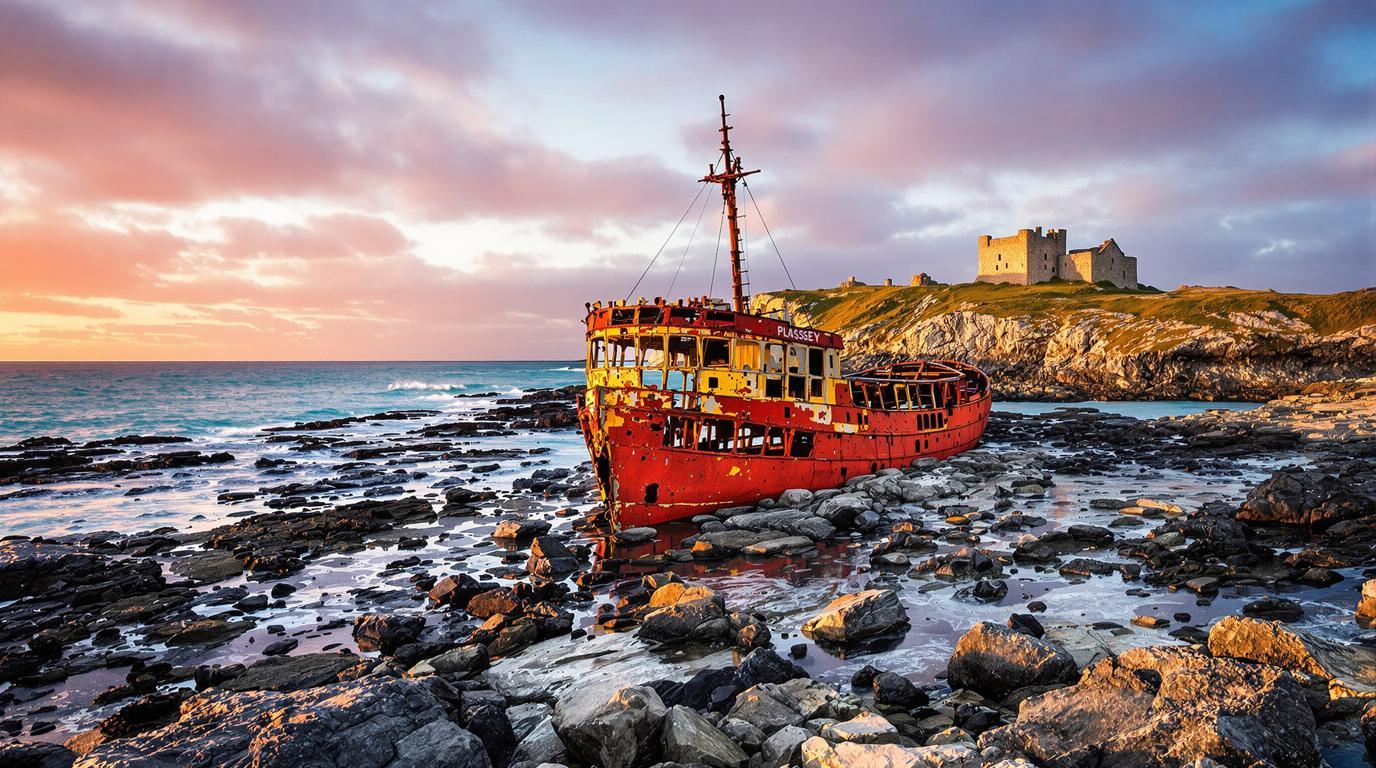The smallest of Ireland’s Aran Islands holds secrets that even seasoned travelers often miss. Just a 20-minute ferry ride from the mainland, Inis Oírr (pronounced “Inisheer”) feels like stepping into an Ireland of centuries past—where ancient traditions thrive amidst dramatic landscapes that have mesmerized visitors for generations.
An island where shipwrecks become landmarks
The haunting silhouette of the Plassey shipwreck stands sentinel on Inis Oírr’s rocky shore. This cargo vessel ran aground during a fierce storm in 1960 and was miraculously washed onto the island by powerful waves. Today, the rusted hull creates one of Ireland’s most photographed scenes, especially at sunrise when golden light illuminates its weathered frame against turquoise waters.
“That shipwreck has become part of our identity,” explains local fisherman Sean O’Brien. “It reminds us of nature’s power and our resilience as islanders.”
Stone walls that tell centuries of stories
A complex network of limestone walls crisscrosses the island’s three square miles, creating a mesmerizing patchwork visible from O’Brien’s Castle, a 14th-century fortress perched on Inis Oírr’s highest point. These hand-built barriers, constructed without mortar, have protected crops from Atlantic winds for generations while showcasing remarkable craftsmanship that continues today.
Pubs where music sessions happen spontaneously
Tigh Ned’s pub offers something increasingly rare in our modern world—authentic traditional music sessions that unfold organically among locals. Unlike staged performances for tourists, these gatherings feature island residents sharing songs passed through generations. Grab a pint and witness musical conversations between fiddles, tin whistles, and bodhráns that might continue until dawn.
A lighthouse that guided countless mariners home
The distinctive black and white stripes of Inis Oírr’s lighthouse (Fardurris Point) have provided critical navigation since 1857. While most visitors focus on the shipwreck, this sentinel offers equally compelling views—especially at sunset when dramatic shadows stretch across limestone fields. A short bike ride from the village brings you to this peaceful corner where the Atlantic stretches endlessly westward.
“Standing at our lighthouse feels like being at the edge of Europe. On clear days, you can see the Cliffs of Moher on the mainland—it’s magic,” shares island tour guide Máire Ní Fhlatharta.
Ancient churches surrounded by wildflowers
The ruins of 10th-century Teampall Chaomháin hide among wildflowers each spring. This simple stone church, dedicated to the island’s patron saint, offers peaceful reflection away from the (relatively few) crowds. Visit at sunrise when soft light illuminates ancient carvings on weathered stones—a photographer’s dream requiring no filters.
If you’re longing for more island adventures, consider this tiny Greek island with Caribbean-blue waters or explore secret Adriatic islands aboard a sailboat in Croatia.
Discover the island on two wheels
With no cars allowed (except for residents), bicycles reign supreme on Inis Oírr. Rentals await at the pier, offering the perfect pace to absorb coastal views and encounter friendly locals. The entire island can be cycled in an afternoon, but savvy travelers allow a full day to pause at hidden coves and ancient sites that guidebooks rarely mention.
Island-hoppers might also appreciate this Scottish island with Caribbean-like beaches or sleeping above clouds in wooden cabins on this Portuguese island.
Where to stay: authentic island hospitality
Accommodation choices remain refreshingly simple—family-run B&Bs with home-cooked breakfasts featuring fresh-caught fish and warm scones. For wellness enthusiasts, consider floating yoga retreats in Greece’s Ionian islands for your next island escape.
“We don’t have luxury hotels,” says local innkeeper Marie O’Flaherty. “What we offer instead is genuine connection—to our island, our culture, and each other. That’s becoming the true luxury in today’s world.”
Inis Oírr remains an island where time moves differently—where conversations with strangers become lifelong memories, where music and stories flow as freely as the Atlantic winds, and where Ireland’s soul reveals itself most authentically to those willing to venture beyond the tourist trails.
